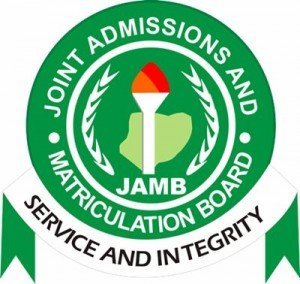“Curriculum Vitae” Meaning, Content, Example – How to Write, Create and Prepare a Successful CV / Resume

So you’re on the job market and need to put together a CV. Where do you even start? A CV, or curriculum vitae, is a document that provides an overview of your professional and educational experience. It’s meant to give potential employers a quick snapshot of your background and qualifications. While the task of creating a CV can seem daunting, it doesn’t have to be. With some time and effort, you can craft a stellar CV that will make you a strong candidate.
The key is to keep your CV concise, compelling, and targeted to the specific position. Focus on quantifying your key accomplishments and the impact you made in each role. Use an easy-to-read format with clear section headings. And be sure to have a friend or family member review your CV for any errors before you send it out into the world.
If you follow these tips, you’ll be well on your way to developing a CV that will get you to the interview stage. The interview, of course, is a whole other story. But one step at a time! Your CV is your first chance to make a great impression. With the right mindset and preparation, you’ve got this.
What Is a Curriculum Vitae or Resume?
A curriculum vitae, or CV, is a comprehensive document highlighting your professional and academic history. Unlike a resume, which is typically tailored to a specific position, a CV outlines your entire career.
When should you use a CV? If you’re applying for jobs in academia, research, or medical fields, a CV is usually expected. It’s also a good option if you have an extensive work history or want to emphasize experiences that may not directly relate to a particular job.
What to Include
A successful CV should cover the following:
- Contact information: Your name, address, phone number, and email.
- Education: List degrees obtained, institutions attended, and relevant coursework. Start with your most recent degree.
-Experience: Include positions held, companies worked for, dates employed, job titles, and bulleted lists describing your responsibilities and key accomplishments.
-Publications: Provide citations for any papers, books, or other publications you have authored or contributed to.
-Skills: Highlight relevant skills, languages, techniques, machinery, and software you are proficient in.
-Optional sections: You can add sections for honors and awards, affiliations, interests, and references.
A CV allows you to comprehensively outline your background and qualifications. Make sure yours is clear, concise, and highlights the experiences and attributes that qualify you for your desired position. With the right CV, you’ll be on your way to new and exciting opportunities.
Essential Sections to Include in Your CV and Resume
To make sure your CV gets noticed, you need to include the essential sections that highlight your experience and qualifications.
Work Experience
List your work experience in reverse chronological order, starting with your most recent job. For each role, include your job titles, the companies you worked for, dates employed, and bullet points highlighting your responsibilities and key accomplishments. Use active verbs and quantify your key wins when possible.
Education
Include the schools you attended, degrees or certifications earned, and relevant coursework. List in reverse chronological order. If you recently graduated, you may want to include relevant coursework, projects completed, honors and awards.
Skills
Highlight relevant skills, languages, computer programs, machinery, etc. you are proficient in. These could include both technical and soft skills. Back up your claims with examples of how you’ve used each skill.
Optional Sections
You may want to add sections for honors and awards, publications, affiliations, volunteering, interests, and hobbies to round out your CV. But only include what is relevant for the specific position. A long CV does not necessarily mean a good one.
With the essential sections covered and a focused, accomplishment-driven CV, you’ll be ready to apply to new opportunities. Keep tweaking and improving your CV as you gain more experience. And remember, a good CV is a living document and should be updated frequently. With the right foundation and some polish, your CV can open doors to interviews and new career adventures.
Curriculum Vitae (CV) Example How it Look Like

Tips for Writing an Effective Curriculum Vitae
Keep it concise and relevant
A CV should be a concise summary of your relevant experience, education, skills, and accomplishments. Only include information that is directly relevant to the position you’re applying for. Keep your CV to 1 page if possible, or 2 pages at most.
Focus on achievements and impact
Don’t just list your job duties and responsibilities. Focus on quantifiable achievements and the impact you made in each role. Use numbers and metrics to emphasize key accomplishments like “Increased sales 25% year-over-year” or “Reduced customer complaints by 50% annually.”
Use a simple, clean layout
Your CV should be simple, clean, and easy to read quickly. Use clear section headings for “Experience,” “Education,” “Skills,” and “Interests.” Within each section, list items in reverse chronological order. Use 1-inch margins, single line spacing, and a simple, legible font like Arial or Calibri, sized between 10 and 12 points.
Tailor for each position
Customize your CV for each new job application to match what the employer is looking for. Focus on key requirements listed in the job posting and emphasize relevant experience, qualifications, and achievements. Move unrelated information to the end or remove it altogether.
Get feedback
Have a friend or family member review your CV for any errors in spelling, grammar, or punctuation. Ask them if the overall structure and content is clear and compelling. Incorporate their feedback into your CV—a fresh set of eyes can help identify areas for improvement you may have missed.
With some polish and customization for each new opportunity, an effective CV can help showcase your experience and open the door to an interview. Keep it concise, focus on achievements, use a simple layout, tailor for each position, and get feedback. Following these tips will help you create a CV that stands out to employers.
How to Prepare and Create a Standout CV
To create a standout CV, you need to highlight why you’re the perfect candidate for the job. Focus on relevant experience, qualifications, skills, and achievements that match what the employer is looking for.
Emphasize Relevant Experience
List your work experience in reverse chronological order, starting with your current or most recent job. For each role, use concise bullet points to describe your key responsibilities and major accomplishments that are most relevant for the position you’re applying to. Use active verbs and quantify your key achievements when possible.
Highlight Your Skills
Create a “skills” or “competencies” section that lists all technical skills, languages, computer programs, machinery, etc. that you have expertise in. These could include:
- Proficiency in Microsoft Office (Word, Excel, PowerPoint)
- Fluent in Spanish and English
- Basic web design skills (HTML, CSS)
You can also include soft skills, like:
- Excellent verbal and written communication
- Detail-oriented and highly organized
- Ability to work independently and as part of a team
Include Relevant Education and Credentials
List degrees, certifications, and credentials you have earned that are pertinent for the role. Include your GPA if it was above a 3.0. You can also note relevant coursework, activities, honors, and awards.
Use a Simple, Clean Layout
Your CV should be concise, easy to read, and visually appealing. Use clear section headings, balance white space and text, choose a simple but professional font, and use parallel sentence structure for a consistent flow. Proofread carefully to ensure there are no typos or grammatical errors before distributing.
Following these tips will help you craft a compelling CV that showcases why you’re the ideal candidate. With a bit of tailoring for each position, your CV can help open the door to interviews and new career opportunities.
Common Curriculum Vitae Mistakes to Avoid
A curriculum vitae (CV) aims to make a great first impression, but common mistakes can undermine your efforts. Avoid these pitfalls to create a CV that helps you land an interview.
Lack of Focus
Your CV should be tailored for each position. Don’t include irrelevant work experience or skills that don’t match the requirements listed in the job posting. Focus on relevant and recent work that shows how you’re a good fit for that particular role.
Long-winded or Vague
Keep descriptions concise while quantifying your key accomplishments and the impact you made. Don’t just list job duties. Use numbers, percentages, and metrics to strengthen your key achievements. For example, say “Reduced customer wait time 25% year over year” rather than “Improved customer service.”
Poor Formatting
A messy or inconsistent CV won’t impress anyone. Use clear section headings, uniform spacing, and parallel sentence structure. Emphasize important information with bolding, underlining or italics. Stick to a simple, clean font, like Arial, Calibri or Times New Roman in a conservative size, like 10 to 12 point.
Lack of Proofreading
Double check for any errors in spelling, grammar, or punctuation before sending your CV. Have a friend or family member also review and provide feedback. Mistakes suggest a lack of care and attention to detail.
Including References
Don’t include the statement “References available upon request.” This is unnecessary and takes up valuable space. Only provide references if specifically requested in the job listing. Have them prepared as a separate sheet to submit when asked.
Avoiding these common curriculum vitae mistakes will ensure you make a polished and professional first impression. With a well-crafted CV focused on the needs of the employer, you’ll maximize your chances of getting that important interview.
Conclusion
So there you have it, the basics of crafting a killer CV. Remember, this is your chance to make a great first impression and show how you’re the perfect candidate. Keep it concise, focus on relevant experience, quantify your key achievements, and express your passion. Polish it, proofread it, and have a friend review it. Then start applying, follow up, and get ready to land that dream job. You’ve got this! With a solid CV and the right motivation, you’ll be well on your way to career success in no time. Now get out there and go get ’em!












